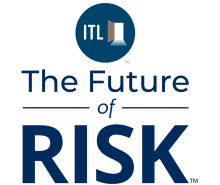It's easy to find an insurer working on actuarial transformation. It's less easy to find one that's getting it right.
That's because moving actuarial data and the key tools of the trade to the cloud is much less a technical challenge than it is a political and organizational one, and that distinction remains surprisingly opaque among insurers.
Yes, actuarial transformation is inherently technical, involving Python, SQL, Databricks, Dataiku, and the like. But success and the business benefit it can bring depend most on human communication at both the executive and implementation-team levels.
The unique context of actuarial transformation puts a premium on communication, because differing motivations and shared turf are a recipe for friction between the actuarial and IT teams, and that friction can stall projects.
Actuaries want control over their tools, because their deep understanding of those tools' strengths and weaknesses is critical to producing precise risk models and actuarial processes. The IT team wants to control all of an insurer's IT infrastructure for a host of reasons, not least to prevent security and maintenance problems that can stem from systems that actuaries are more than capable of developing on their own.
Any major IT project needs buy-in from both IT and the business it will serve. The change management involved in fostering such acceptance is exceptionally important in actuarial transformation, because actuaries are at least as comfortable with data as the IT team, albeit with different aims.
Start at the executive level
The transformation project's executive sponsor must engage in the earliest days of an actuarial-transformation effort. This can't be an arbitrary assignment based on title or convenience. The executive sponsor must have real skin in the game tied to the transformation's success or failure and the right level of formal and informal authority within the organization. Their main role involves aligning executive peers as well as stakeholders on the actuarial and IT teams and others whose support will advance the project (or whose resistance could impede it). That happens in two ways.
First, the executive sponsor builds and presents the business case for why actuarial transformation is worth doing with messaging tailored to the top of the organization as well as to the actuarial and IT staff who will be doing the transformation work. Those messages include clarifying process changes and technology upgrades; providing estimates on the time, effort and money involved in the project; and explaining the expected benefits. Those benefits may include expected revenue increases thanks to more accurate risk assessment and pricing accuracy, higher productivity, improved actuarial creativity resulting in new products, and better positioning for future growth.
Second, the executive sponsor clearly conveys what's needed to achieve that business case. That can include the processes to be automated, the nature and timing of the implementation effort, the outside resources to be engaged, the budget and cost centers bearing it, and the KPIs against which you'll measure success. To effectively inform, persuade, and cajole peers and stakeholders, the executive sponsor must be engaged throughout preplanning, readiness assessments, and execution plans.
Next, engage with the actuarial and IT teams
The actuarial and IT teams then need special attention. Actuaries must comprehend the value of automating and codifying processes they've been doing in their heads and using custom combinations of algorithms in various data-manipulation runs. They must be convinced that the new solutions are at least as reliable as their old standbys.
IT staff involved in developing the systems enabling actuarial transformation must be comfortable with the actuarial team's processes and approaches and be able to explain the IT team's needs effectively to them. Not every developer has the combination of IT skills, business knowledge, and communication abilities required. Importantly, the chosen few should be embedded with the actuarial function, where they can interact, collaborate, and build trust.
That trust will only deepen as deliverables accrue and the actuary team sees the value of transformation. That trust building goes both ways: Actuaries should respect the IT organization's best practices related to scope definition, documentation, version control, testing, and deployment, especially as actuaries gain skills in Python, SQL querying, and other tools enabling them to develop their own cloud-based solutions.
Like so many technology initiatives, successful actuarial transformation hinges on the human element. Foremost, it takes the right executive sponsor. That person must be heavily invested in the transformation and have the formal and informal authority to make sure the work gets done and delivers the right business outcomes.







